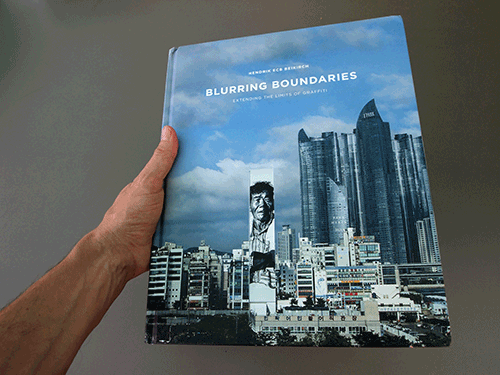
Can you present yourself? What initially brought you to graffiti? And when did you make the transition to painting portraits?
Hendrik ecb Beikirch, traveling the world. Currently living and working in Koblenz, Germany.
I started in 1989 with classical graffiti, but within a short while changed to more of a unique approach.
Back then my concepts where more focused on graphical shapes whereas nowadays the ideas of my work have more of a fine art approach focusing on textures, showing expression within my portraits through a more painterly means rather than just using spray.
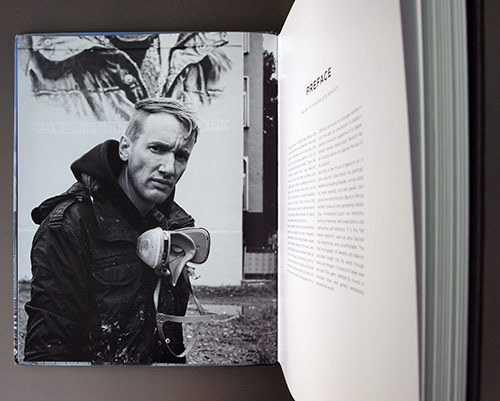
Who are the people you paint?
In both my large-scale murals and canvases, I want to paint people whose faces tell a story; therefore I take inspiration from accidental and brief encounters.
Taking life back to the streets. Real expressions, faces with stories to tell.
Digital media has changed the way we see beauty anyway. Most faces we see printed in public like on billboards or ads appear unnatural.
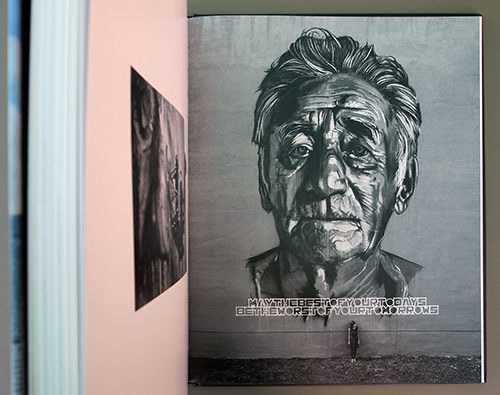
Are your faces always related to the place where you paint them?
The faces are not always related to the place where they are painted.
The portrait has to fit the wall and vice versa, this is a lot about that first feeling.
From a distance, I hope it reads as photo-realistic perfection, yet somewhat unreal due to the drips and abstract textures.
My goal is one should relate so much to the painting from afar, that once he/she stands close, it becomes vague and abstract again.
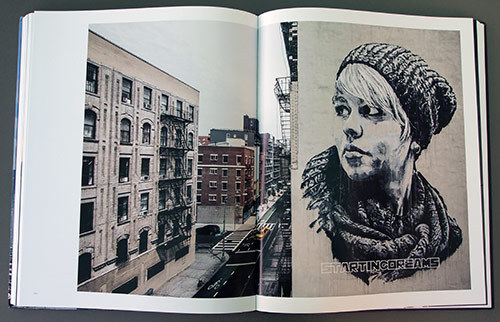
Can you tell us what we will find in your book: Blurring Boundaries ?
documents on 208 pages my achievements of the last years. It captures the two fields I worked on: Fictional faces and portraits of real people, both on walls and on canvas.
Was it difficult to select the photos for the book?
As I do spend a lot of time on the photographic documentation of my woks it was kind of tough to select the best photos.
You’re known for painting large scale paintings. I can imagine it is very satisfying when the work is done. But do you really take fun painting these big walls?
It is what I love to do. In fact painting big walls is relief and fun all at once for me.
When I am in the cherry picker basket – even if I paint quite fast, like doing the side of a 12 story building in three days – a day is less hectic and stressful just like when smoking from a CBD Cartridge.
If it comes to art in public space I believe you got two options to go for: Clandestine, small, hidden and tiny or as big or tall as it can get.
Art has to compete with architecture, advertisements, and passers-by attention in busy city streets.
You only got a few seconds to catch the attention, to get this first impact.
That’s why I go for the bigger the better.
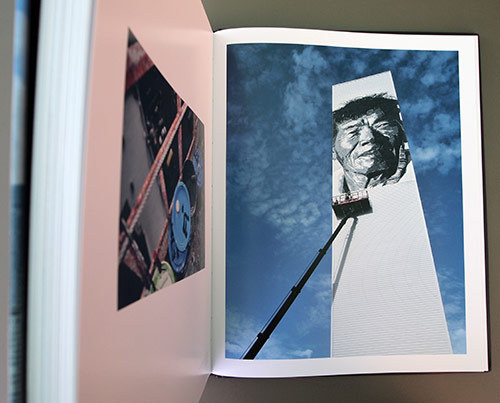
When you have been asked to paint that 70m high wall in South Korea, have you instantly accepted or have you hesitated?
When I first saw a photo of the wall, I was instantly stoked. Arriving at the site it was even better.
The Daniel Libeskind skyscrapers in the background offered a perfect background, both on an aesthetically and content level.
I can imagine you don’t suffer from vertigo… ?
I don’t suffer from vertigo, but as the cherry picker basket was open on the front the view down was something I had to get used to.
Are you sometimes tempted by adding colors to your portraits ?
No, not really.
If it comes to capture emotions in a portrait I think black and white is the best way to go, plus with the big walls you have to break it down to a only a few shades anyway.
And just black and white are so strong by themselves..
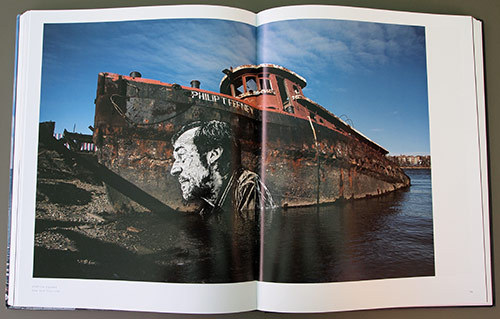
What does inspire you, and who’s work are you into?
My art teacher in school had lived in NYC in the early eighties.
In our drawing room hung a poster he had brought from over there with photos of painted subway cars on it. I was totally fascinated by the Lee Quinones “Stop the Bomb” wholecar.
Besides that the installation Gottfried Helnwein did in Cologne in 1988 in memory of “Kristallnacht” (The Night of Broken Glass 1938). A hundred meter long wall of pictures with large images of children’s faces, in a seemingly endless row. When I saw this back then it blew my mind.
Nowadays Gerhard Richter for his realism and diversity.
Richard Serra for combining art and physical experience as well as for the way he works with public space.
Where do you see yourself in 10 years?
Nothing last forever.
In the end all you have is what you stood for. I am trying to get this right.
BLURRING BOUNDARIES by Hendrik ecb Beikirch
208 full color pages
Publikat Publishing
ISBN: 978-3-939566-32-8
